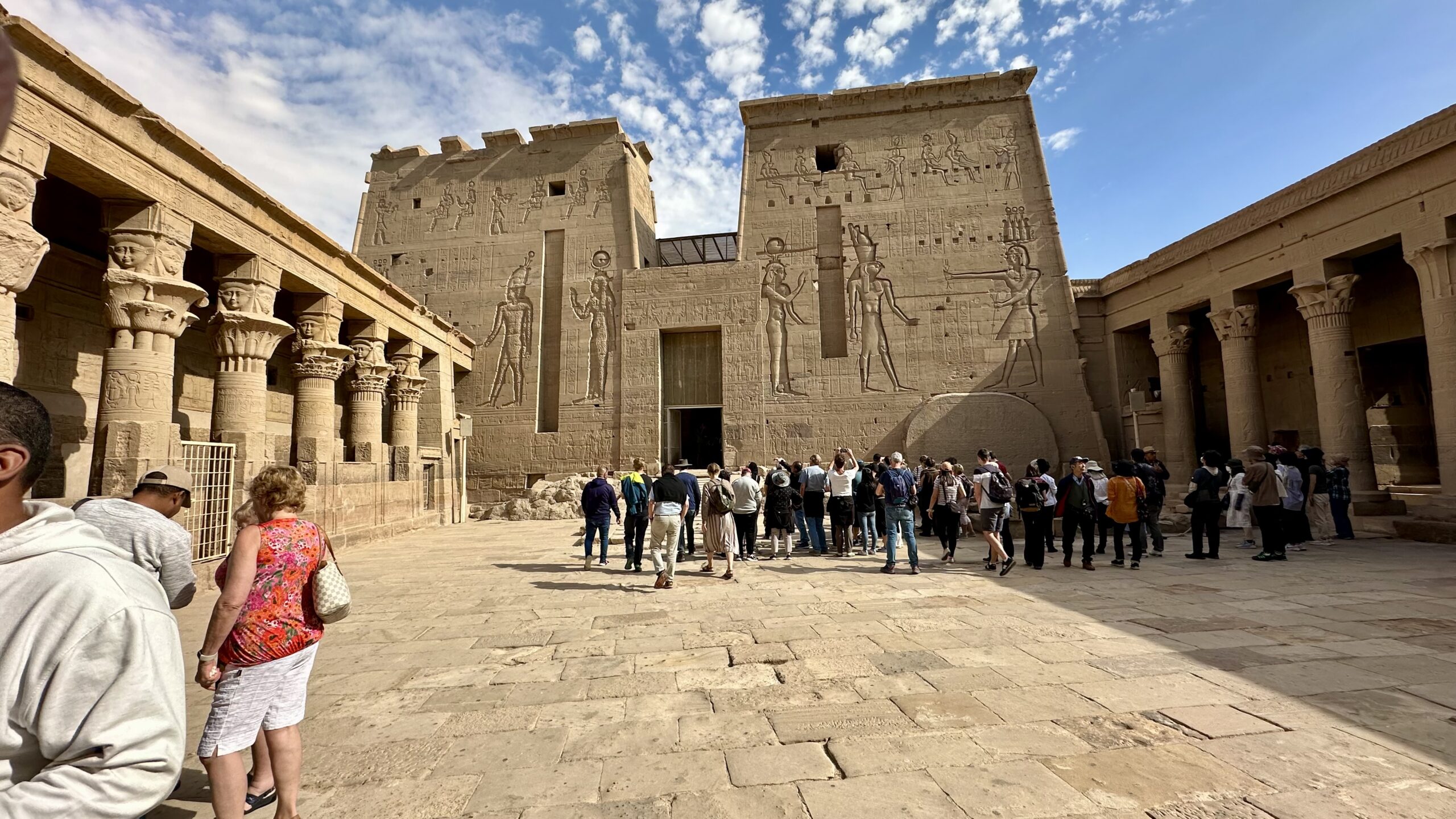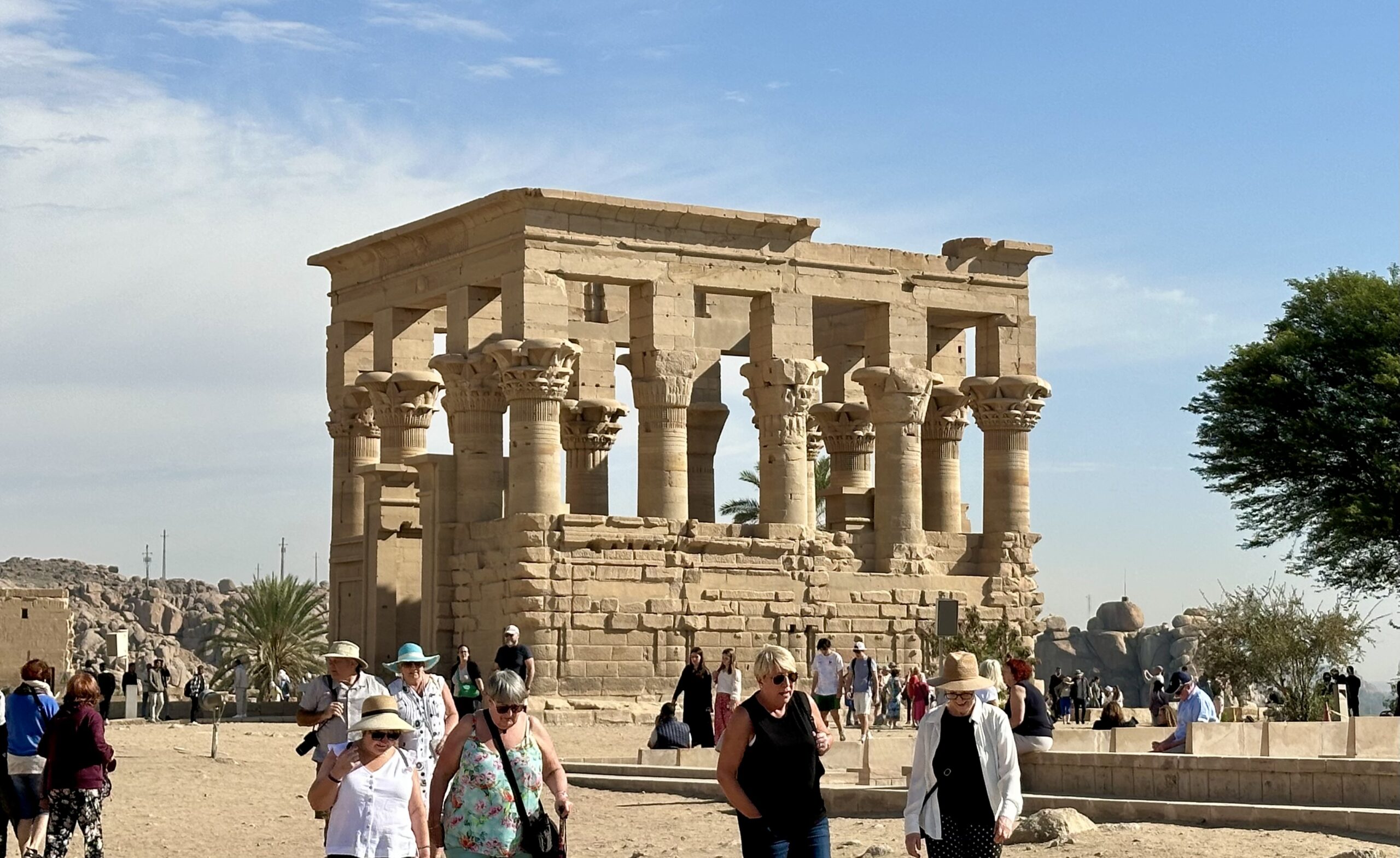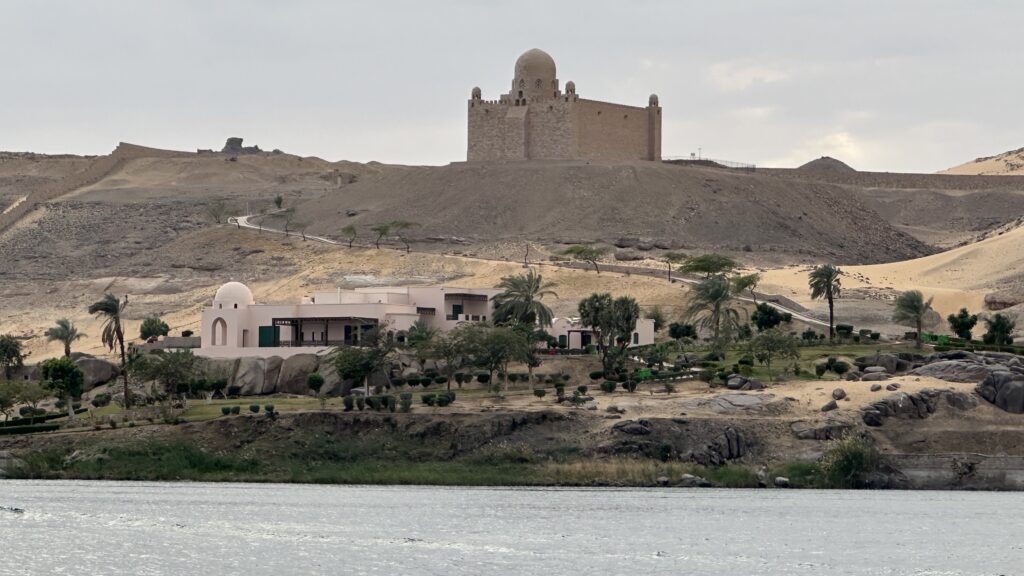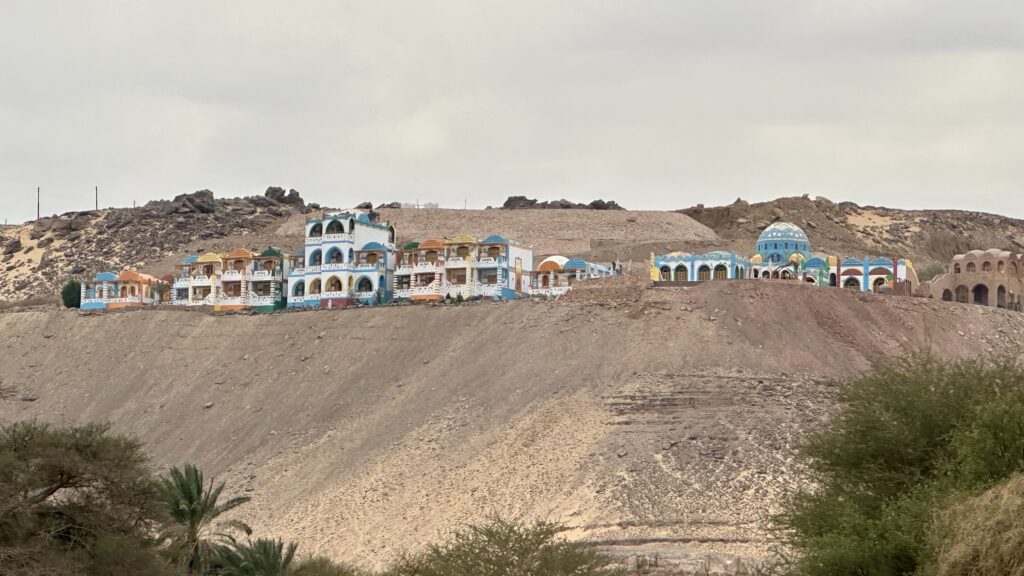- Aswan High Dam
- Philae Temple
- Unfinished Obelisk
- Perfume shopping
- Nubian Village
Aswan High Dam – Our first stop on this day was the Aswan Dam. Aswan’s High Dam is modern Egypt’s most lauded and yet controversial building project. Construction started in 1960 and took 11 years to complete. The dam was President Nasser’s pet project and greatest achievement, and was achieved through funding and technical help from the Soviet Union. Its building took 42.7 billion cubic meters of stone with its total length was 3.6 kilometers. The average capacity of the dam’s reservoir (Lake Nasser) is 135 billion cubic meters with a maximum capacity of 157 billion cubic meters. The dam allowed sustainable electricity across the country and increased the amount of arable land in Egypt. However, it also put an end to the annual Nile flood, which fertilized farmer fields with its rich silt deposits, and the creation of Lake Nasser (the world’s largest artificial lake) wiped away much of Upper Egypt’s vast heritage as the waters rose.
A four-lane highway runs across the top of the dam where there is a Egyptian-Soviet Friendship Tower and an inscription commemorating the completion and the cooperation between Egypt and the Soviet Union to build it. The tower is in the shape of a Lotus which is the symbol of ancient Egypt.



Philae Temple – To visit this temple, we had to take a boat ride to Agilkia Island where it sits today. You can see the temple as we approach the island.

In 1902 the construction of the Aswan Low Dam caused Philae Island and its temple complex to flood for most of the year. Tourists could explore the partially submerged ruins by rowboat and the temple foundations were strengthened to help them withstand the annual flood damage. When plans for the Aswan High Dam were revealed in 1954, it became clear that Philae Island would soon be fully submerged and its ancient treasures lost forever. As a result, UNESCO’s rescue project moved the temple and its accompanying shrines and sanctuaries brick-by-brick to nearby Agilkia Island and painstakingly reconstructed on higher ground. In the name of authenticity, Agilkia was even landscaped to match the temple’s original setting on Philae Island. At Philae, a coffer dam was built to keep the river water at bay while the monuments were cleaned, measured and dismantled.
The temple was primarily dedicated to Isis but her husband Osiris and her son Horus were also worshipped here. It was erected during the third and second centuries BCE and decorated from the time of Ptolemy II onward.
First Pylon: The Temple Entranceway – A large Forecourt flanked by two colonnades on its eastern and western ends leads to the First Pylon whose two towers and central doorway provide a grand 18-meter-high entry that is decorated with reliefs. The court, was created under Ptolemy VI or VIII to receive visitors during festivities. In front of the main gateway to the first pylon stand two Roman style lions carved from pink granite.



Inner Courtyard – Once you pass through the First Pylon, there is the Mammisi (birth-house) located on the western flank of the inner courtyard. It is surrounded on three sides by a colonnade of floral topped columns each crowned with a sistrum and Hathor-headed capital. The Mammisi (birth house) was a common feature of Ptolemaic temples and the example on Philae is similar in layout and decoration to examples at Dendera and Edfu.

Second Pylon and Inner Courtyard Colonnade
On the eastern side of the inner courtyard (opposite the Mammisi) there is a colonnade with access to a few small storerooms and in the north the Second Pylon provides access to the main structure of the Temple of Isis. The Second pylon is approximately 105 foot wide and 40 foot high and is not set parallel to the First Pylon. A series of small steps lead to the gateway between the two towers. The pylon towers depict scenes of Pharaohs making offerings to the gods. A staircase in the western tower leads to the roof and the “Osirian Chambers”. Both towers have grooves for flagpoles just like those on the First Pylon.

Hypostyle Hall and the Three Sanctuaries
The second pylon leads to the hypostyle hall beyond which lie three vestibules, leading into the Inner Sanctuary of Isis. Originally two granite shrines stood in the sanctuary, one containing a gold statue of Isis and another containing the barque in which the statue travelled, but these were long ago moved to Florence and Paris, and only the stone pedestal for the barque remains, inscribed with the names of Ptolemy III and his wife, Berenice.



Around the Temple of Isis – Kiosk of Trajan – The Trajan’s Kiosk, locally known as the Pharaoh’s Bed, is an open temple with a beautiful structure of 14 massive columns with carved floral capitals, but simple in its design. The Kiosk of Trajan originally served as the main entrance into the temple from the river. It is conventionally attributed to the Roman emperor Trajan who lived around 100 CE, and who gave it its current decorations, though some experts think the structure itself may be older, possibly dating to the time of Augustus. Inside are reliefs showing Trajan as a pharaoh making offerings to Osiris, Isis and Horus.

Around the Temple of Isis – Temple of Hathor – On the east side of the Temple of Isis stands the temple of Hathor which was decorated under Ptolemy VI, Ptolemy VIII, and Augustus and once had its own mud-brick enclosure wall. A block built into walls close to the temple also mentions Ptolemy XII. The cult of the temple focused on Hathor as embodiment of the Sun’s Eye that was brought back from Nubia.


Unfinished Obelisk – Aswan’s northern stone quarry is home to the famous Unfinished Obelisk–a 41-meter-long and four-meter-wide chunk of stone whose creation was probably ordered by Queen Hatshepsut. The creator began to carve it directly out of bedrock (see picture below), but cracks appeared in the granite and the project was abandoned. The unfinished obelisk offers unusual insights into ancient Egyptian stone-working techniques, with marks from workers’ tools still clearly visible. It is estimated that if completed, the obelisk would have weighed 1,168 tons and would have been the largest ever hewn. On the surrounding rock faces, you can also see the many traces of the work of ancient stonecutters.



Elite Aromatherapy – We were taken to a shop that sold oil perfumes as part of the tour. We spent close to 2 hours here smelling a variety of perfumes. The Rose and Lotus ones were the most popular with the group and we ended up buying more than a few bottles.


Nubian Village – We had a lunch at the ship and later in the afternoon, we went on a boat ride on Nasser Lake to Nubian village. There is more than one Nubian Village in Aswan area. We headed to the West Al Khazan village. It was basically a scenic cruise, passing lots of the ancient sites, the botanic garden and colorful Nubian hotels. It made the journey worthwhile before we’d even arrived at the village.
Passing by Valley of Nobles – We would have loved to climb up the hill and spend some time visiting some of the tombs of nobles and we could have done so, if we had spent less time in the aromatherapy shop. All we could do was, admire the beautiful setting from far. The tombs, in the Tombs of the Nobles, are still being excavated: significant finds were made in 2014 and 2017. Six decorated tombs are currently open to the public. The tombs date from the Old and Middle Kingdoms and most follow a simple plan, with an entrance hall, a pillared room and a corridor leading to the burial chamber.

Passing by Aga Khan Mausoleum – The Mausoleum of Aga Khan is the mausoleum of Sultan Muhammed Shah, who died in 1957. The construction of the mausoleum, commissioned by Aga Khan’s wife, began in 1956 and ended in 1960. The mausoleum sits atop a hill along the west bank of Nile, where it overlooks Aga Khan III and Begum Om Habibeh Aga Khan’s villa, the Prince Sadruddin Aga Khan House. The villa served as a winter home for Aga Khan III, whose will stated that he would be buried near the villa two years after his death.


Passing by Botanical Garden, Water Reservoir, Colorful hotels





Passing by Old Cataract Hotel – This hotel’s biggest claim to fame is that Agatha Christie wrote part of Death on the Nile while staying here, and the hotel also featured in the movie based on the novel.


We finally reached the colorful village which was crowded with people and camels. Our guide took us to a colorful Nubian home where we were offered drinks and snacks. We then visited the small market where you can buy local spices and dates at a bargain.


